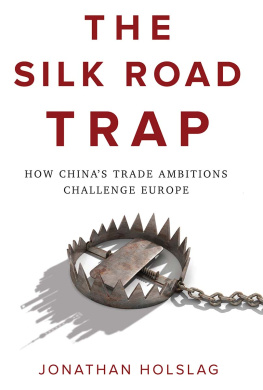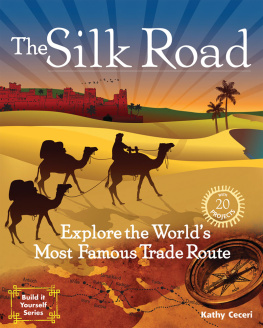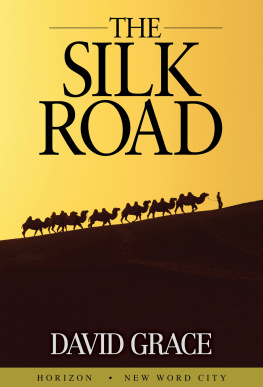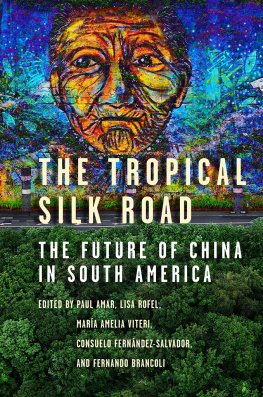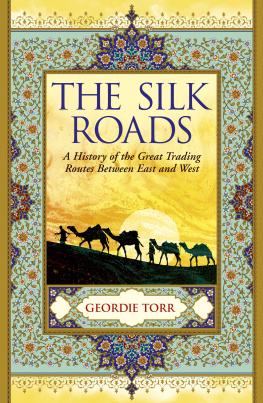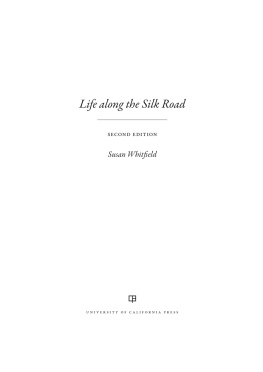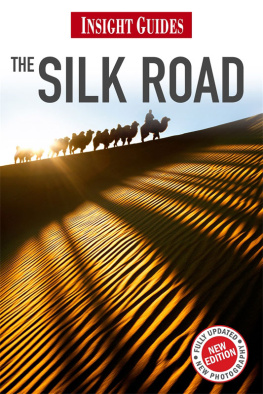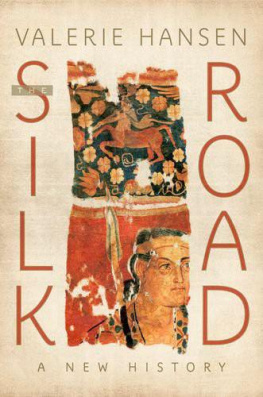THE ELECTRONIC SILK ROAD
THE ELECTRONIC SILK ROAD
HOW THE WEB BINDS
THE WORLD IN
COMMERCE
ANUPAM CHANDER
Yale
UNIVERSITY PRESS
New Haven & London
Copyright 2013 by Yale University.
All rights reserved.
Subject to the exception immediately following, this book may not be reproduced, in whole or in part, including illustrations, in any form (beyond that copying permitted by Sections 107 and 108 of the US Copyright Law and except by reviewers for the public press), without written permission from the publishers.
An online version of the work is made available under a Creative Commons license for use that is both noncommercial and nonderivative. The terms of the license are set forth at http://creativecommons.org/licenses/by-nc-nd/3.0/legalcode. For more information about the work, please see the authors website at http://www.chander.com.
Yale University Press books may be purchased in quantity for educational, business, or promotional use. For information, please e-mail sales.press@yale.edu (US office) or sales@yaleup.co.uk (UK office).
Designed by Lindsey Voskowsky.
Set in Adobe Caslon Pro and Whitney type by IDS Infotech, Ltd.
Printed in the United States of America.
Library of Congress Cataloging-in-Publication Data
Chander, Anupam.
The electronic silk road : how the web binds the world in commerce /
Anupam Chander.
pages cm
Includes bibliographical references and index.
ISBN 978-0-300-15459-7 (clothbound : alk. paper)
1. Law and globalizationEconomic aspects. 2. Electronic commerce
Law and legislation. 3. InternetSocial aspects. 4. Globalization
Economic aspects. I. Title.
KZ1268.C47 2012
381.142dc23
2012047258
A catalogue record for this book is available from the British Library.
This paper meets the requirements of ANSI/NISO Z39.481992
(Permanence of Paper).
10 9 8 7 6 5 4 3 2 1
For
Madhavi Sunder, sine qua non,
and
Harish Chander and Yash Garg,
who sacrificed so much to embrace the opportunities of globalization
I think of the ancient Silk Road as the Internet of antiquity.
Yo-Yo Ma
CONTENTS
The New Global Division of Labor
Western Entrept: Silicon Valley
Eastern Entrept: Bangalore
Pirates of Cyberspace
Facebookistan
Freeing Trade in Cyberspace
Handshakes Across the World
Glocalization and Harmonization
Last Stop: Middle Kingdom
ACKNOWLEDGMENTS
Before there was trade in services via cyberspace, people moved. My parents migrated to the United States right before the celebrations marking the Bicentennial, my dad arriving in 1974 and then my mother, with my brother and me in tow, the following year. We flew from New Delhi via Beirut and London to New York, a route that would soon become impossible because of war. A legal change in 1965 made this flight possible. Before immigration law revisions that year, US law had set a quota of merely a hundred Indian immigrants per year. My parents move made possible the extraordinary education I received in the United States and, such are the ironies of globalization, allowed me to study under the great Indian Nobel laureate Amartya Sen.
In 2003, two disparate media sources I read, the crowd-sourced technology site Slashdot and the Indian-American paper India Abroad, converged on the phenomenon of outsourcing. The phenomenon bridged my two different scholarly areas of expertisein international economic law and cyberlaw. By examining the issue from a legal perspective, I began to see that outsourcing was part of a larger phenomenontrade in services via electronic networks. This insight helped me see the crucial link that binds together both Bangalore and Silicon Valley. Invited to a cyberlaw retreat on Cape Cod by Harvard Universitys innovative Berkman Center for Internet and Society, I presented my initial thoughts on the subject in August 2003 in a paper then titled NetWork. There, Tim Wu pressed me on the implications of the General Agreement on Trade in Services for this new kind of trade.
Over the past decade, I have learned much about the subject from my colleagues at various institutions. I remain indebted to Deans Kevin Johnson and Rex Perschbacher at the University of California, Davis, for remaining unfailingly supportive at every turn. I am grateful to my colleagues Afra Afsharipour, Diane Amann, Vik Amar, Mario Biagioli, Chris Elmendorf, Tom Joo, and Peter Lee for very helpful comments on drafts. I am grateful to colleagues at other institutions, including Susan Crawford, Tino Cullar, Mark Lemley, Adam Muchmore, and Michael Reisman.
During the writing I had the privilege of being a visiting professor at Chicago, Cornell, Stanford, and Yale law schools. I am also grateful to Harold Koh, then dean at Yale Law School and currently the legal adviser of the United States Department of State, who challenged me to think more about Trade 1.0 when I was discussing Trade 2.0. At lunch with Jack Balkin and me, Bruce Ackerman inquired whether global law was the natural outcome of the developments I describe herein. Daniel Markovits and Alec Stone Sweet led a brilliant dissection of my argument in a workshop that I regret not recording. I am grateful to Jed Rubenfeld for an important dialogue on tensions between democracy and globalization.
I thank Dean Saul Levmore of the University of Chicago Law School for welcoming me into the fervent intellectual environment of his law school for a year. In a faculty workshop at the University of Chicago, Martha Nussbaum, philosopher and thinker nonpareil, urged me to make my normative vision explicit.
Professor Dr. Rolf Weber of the University of Zurich offered incisive commentary when I lectured on the subject at the World Trade Institutes annual World Trade Forum, hosted by Thomas Cottier and Mira Burri. Mira Burri and Ted Jaenger read the entire manuscript and provided superb suggestions. I thank Harvards Mark Wu for his thoughtful commentary in an online symposium on my paper, Trade 2.0, for the Yale Journal of International Law. I learned a great deal from law faculty workshops at Chicago, Connecticut, Emory, Florida State, Illinois, Oregon, Northwestern, UC Davis, UCLA, and Washington University (Saint Louis) as well as technology law and international law workshops at Stanford and Georgetown, respectively, and the Harvard-MIT-Yale Cyberscholar Workshop.
Over the years, I have learned so much from my students. I acknowledge in particular students Kuang-Cheng Chen and Taejin Kim for educating me on cyberlaw in Taiwan and South Korea, respectively. Students such as Jessica Karbowski and Janice Ta of Yale Law School and Sarah Anker, Rubina Chuang, Audrey Goodwater, Angela Ho, Jordy Hur, Uyen Le, Kathryn Lee, Johann Morri, Dimple Patel, and Louis Wai of UC Davis performed invaluable research. Librarians extraordinaire Aaron Dailey, Margaret Peg Durkin, Susan Llano, Elisabeth McKechnie, Erin Murphy, and Rachael Smith helped locate all manner of legal materials. Special thanks to Connie Chan, James Lawrence, Stratos Pahis, for excellent editing of earlier articles.
Parts of this book are adapted from earlier published articles and book chapters and are used here with the permission of the publishers: Trade 2.0, Yale Journal of International Law (2009): 281330; Facebookistan, North Carolina Law Review 90 (2012): 180744; International Trade and Internet Freedom, Proceedings of the American Society of International Law Annual Meeting 102 (2009): 37; and Globalization Through Digitization, in The Impact of Globalization on the United States, ed. Beverly Crawford, vol. 2 (New York: Praeger, 2008), 7397.
Next page

